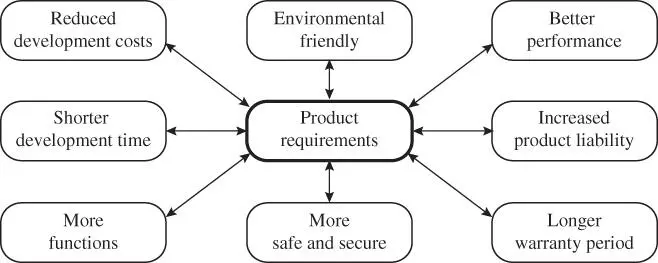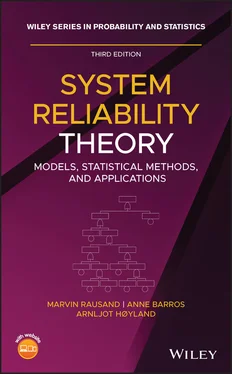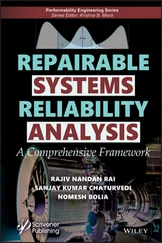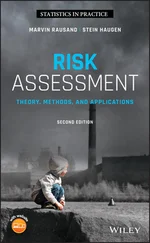9 Evaluate the cost of suggested warranty policies.
10 Calculate the reliability of system options as input to choice between these.
11 Plan and perform reliability acceptance or qualification testing (e.g. in a TQP framework).
Roles in Normal Operation
The main role of the reliability engineer in normal operation is to track items causing abnormally high maintenance cost and production losses or service outages, then find ways to reduce these losses or high costs. The role of a reliability engineer may vary from company to company, but the overall goal is always the same: reduce maintenance costs as much as possible without interrupting system operation.
Another main role of the reliability engineer in this phase is to collect, analyze, and present reliability data. This topic is treated in detail in Chapter 14.
Reliability has to be designed and manufactured into an item. It is too late and too costly to wait until the item is produced. Reliability considerations must be integrated into all steps of the development process. This book presents the main theory and many of the required methods and tools for reliability engineering, but reliability engineering also requires a number of methods that are outside the scope of this book. When to carry out an analysis, which data are available at this stage, and how to update and use the results are central questions in reliability engineering that are not covered in this book.
1.6.2 Timing of Reliability Studies
Reliability studies are carried out to provide input to decision‐making related to an item. The objectives and the scope of the reliability study are dependent on the type of decision to be made. Before starting a reliability study, it is essential to have a clear understanding of the decision and the data needed as input to the decision‐making. A reliability study to provide input to decisions on warranties may, for example, be quite different from a reliability study to provide input to decisions on safety barriers in a risk assessment.
It is very important that the reliability studies are planned and executed such that the required results are available before the decision‐making takes place!
1.7 Objectives, Scope, and Delimitations of the Book
The overall objective of this book is to give a thorough introduction to component and system reliability analysis by the system reliability approach. More detailed objectives are
1 To present and discuss the terminology and the main models used in system reliability studies.
2 To present the main analytical methods used in reliability engineering and management.
3 To present and discuss basic theory of maintenance and preventive maintenance modeling and illustrate how these can be applied.
4 To present the main theory and a selection of methods for reliability data analysis, which is also called survival analysis.
5 To give an introduction to Bayesian probability and Bayesian data analysis.
The book does not specifically deal with how to engineer and manage a reliable system. The main topics of the book are connected to how to define and quantify reliability metrics and to predict the reliability of a system. Our aim is that the book will be a valuable source as follows:
1 A textbook for system reliability courses at university level.
2 A handbook for reliability engineers in industry and consulting companies.
3 A reference book for scientists and engineers in related disciplines.
The following delimitations apply:
The study object is built of hardware parts based on mechanical, electrical, or electronic technology, and may or may not have embedded software and communication to/from the outside. In most cases, the study object has a human/operator interface. Operators and third‐party personnel are outside the scope of the book. This means that human reliability, as such, is not covered. The prime focus of the book is on hardware items.
The reliability of purely software items is outside the scope of this book.
Structural reliability issues are not covered in this book.
The focus of the book is on components and rather simple systems. The theory and methods presented may also be useful for analyzing complex systems, but we have to realize that they may not be sufficient.
Failures caused by deliberate hostile actions is covered rather rudimentarily.
In the main part of the book, we assume that each item can have only two states, functioning or failed. Multistate reliability is not covered properly.
A general introduction to maintenance is not provided. The presentation is delimited to aspects of maintenance that are directly relevant for system reliability.
The book provides a thorough introduction to system reliability analysis, but does not cover reliability engineering and reliability management in a sufficient way.
1.8 Trends and Challenges
System reliability has been around since the 1940s. The relevance of reliability has increased steadily and we clearly see trends and challenges that will increase the relevance in the years to come. In this section, we briefly mention some of these trends and challenges. An overall trend is that customers expect new items to be BETTER, FASTER, and CHEAPER than the items they replace. More specific challenges include
1 Items get more and more complicated with a lot of embedded software. Hardware functions are replaced with software‐based functions. Because the software‐based functions are relatively cheap, many items are loaded with “nice‐to‐have” function that may also fail.
2 Most producers meet fierce international competition. To survive, this requires reduced development costs, shorter time to market, and less time spent on analyses and testing. New items have to be sufficiently reliable in the first concept version.
3 Customers require more and more of the items they purchase, related to functions, quality, and reliability. The requirements are often changing rapidly. Factors influencing item requirements are shown in Figure 1.9.
4 There is an increasing focus on safety and environmental friendliness and an increasing risk of item call‐back if the items should have safety‐related defects.
5 New items are increasingly made up of elements from a variety of subcontractors from many different countries, making it difficult for the main producer to verify the item reliability.
6 For some items, high‐speed operation reduces the tolerance of deviations and increases the consequences of failures, should they happen.
7 There is an increasing focus on warranty. Companies have disappeared because of excessive warranty costs.
8 An increasing number of items are now connected to a cybernetwork and are vulnerable to cyberattacks. Current challenges are related to the rapid developments of smart homes, smart cities, smart transport systems, the Internet of Things (IoT), cyber‐physical systems, systems of systems, and Industry 4.0. Within few years, we expect to see many more new initiatives of similar nature. This will make reliability analyses even more challenging.

Figure 1.9Factors that influence item requirements.
1.9 Standards and Guidelines
A range of standards and guidelines stating requirements to reliability and safety have been issued. Any reliability engineer needs to be familiar with the standards and guidelines that are applicable within her subject areas.
1.10 History of System Reliability
Читать дальше













